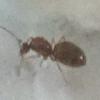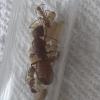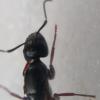@Nathant2131 Not surprised if you lost interest a bit, happens with any hobby, especially when you're so young; so many cool hobbies to see/try  I was feeling pretty down when I lost my 2016 Tetramorium queen, then all my test tubes started flooding... Finally things seem to be calming down and they are doing ok for now. I was into reef tanks for YEARS, but finally just got too much work and $$$$... I miss it at times, but ants I think have filled that gap for now.
I was feeling pretty down when I lost my 2016 Tetramorium queen, then all my test tubes started flooding... Finally things seem to be calming down and they are doing ok for now. I was into reef tanks for YEARS, but finally just got too much work and $$$$... I miss it at times, but ants I think have filled that gap for now.
Pretty much all my colonies are out at this point, though I still have a couple Lasius sp (flavus?) and Temnothorax curvispinosus still in basement as not quite ready for them yet. I started working on one of the Boxbox outworlds for the Temnothorax, but still waiting for the hydrostone to cure as I added a bit too much water to it, so hoping to have that ready tomorrow. I also printed some end caps with small holes for the test tubes, will take some pics when I finally get a couple of them set up to see what I am talking about.
My Aphaenogaster rudis queen from last season finally has larger larvae, though can't tell if she's laid yet this season as their eggs are very white. My second A. rudis queen (who only just recently removed her wings), finally laid as well, so curious to see if she's actually fertile or not. My single Brachymyrmex depilis queen also laid a small batch of eggs (not expecting much success here), as well as my Crematogaster sp. also laid (well one test tube did, the others I can't tell us below them in foam in a box.) My A. picea is really close to more workers as well as some of the larvae have become very ant like. Also can't tell if she's relaid this season. These are pretty reclusive as often buries their test tube entrance with coconut fiber and sand.
Been experimenting a bit more with nest designs. I've been watching @dspdrew's threads, and considering doing a hybrid 3D printed/tile/epoxy nest. The nice part about using epoxy is that it cuts print time pretty substantially which is a nice perk. Also allows for some more creative approaches. Today was working on a larger version of my Ponera nest for the Lasius sp (flavus) as the are primarily a subterranean species. Going to try vermiculite as a medium in that nest to keep it from molding.
Hard to believe any time in the next few weeks P. imparis could start flying.
Edited by noebl1, March 17 2018 - 4:06 PM.

![]()




















